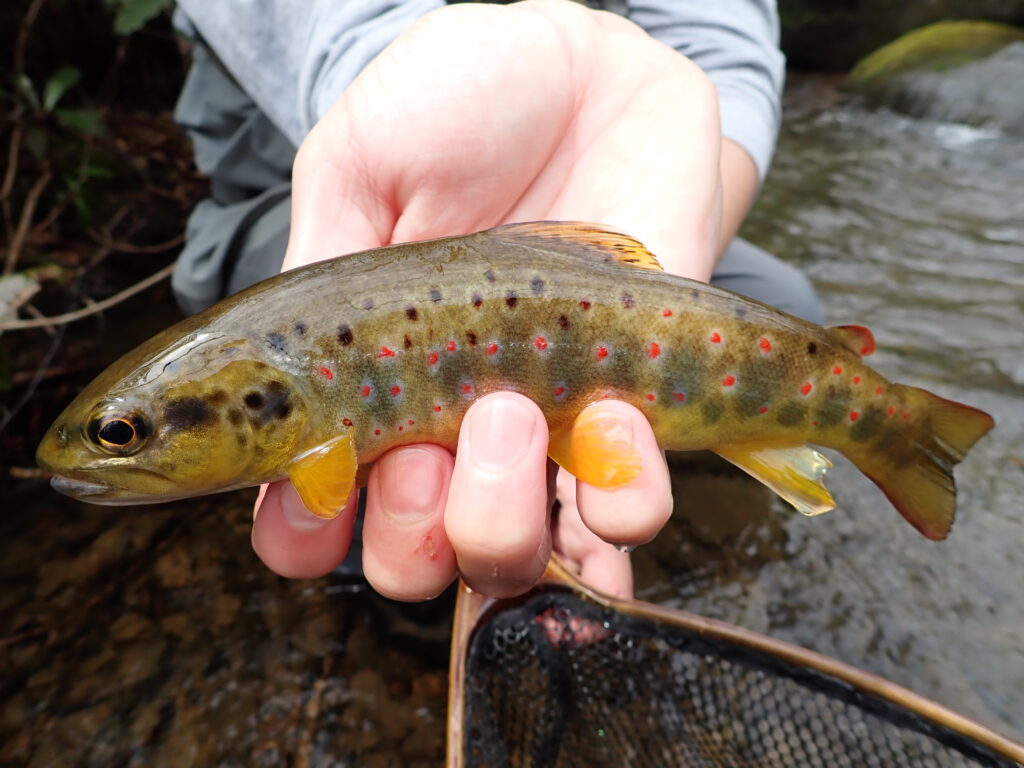Reflections on Mentorship and Conservation
The conservation community needs to lean into mentorship.
Recently, I had the opportunity to engage with the mentorship cohort of Next 100 Colorado while on a conservation tour in the San Luis Valley of Colorado. Inspired by the 100th anniversary of the National Park Service, the Next 100 Colorado focuses on workforce diversity across conservation and outdoor recreation, ensuring equitable access for all people, and using the outdoors to tell accurate, complex, uplifting and healing stories about Colorado lands. The mentorship cohorts are intended to provide community for underrepresented individuals in conservation as well as guidance for mentees who are within the first five years of their conservation career. The conservation trip took place on July 18-19 and consisted of five mentees and four mentors (or members) of Next 100 Colorado.
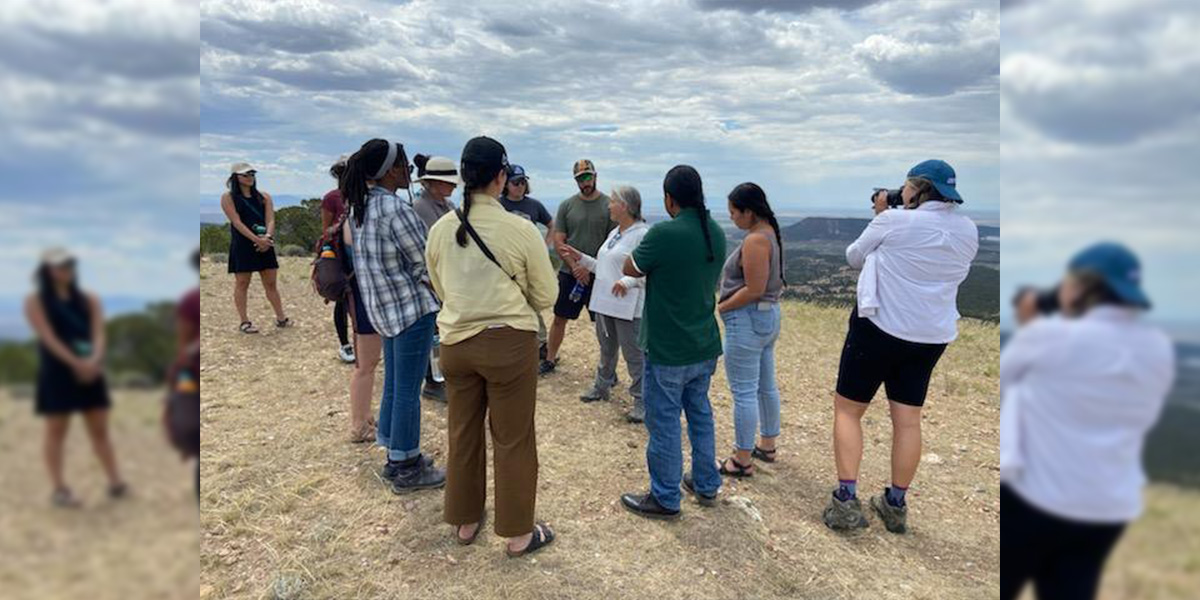
On this trip both mentors and mentees were able to learn about the complexity and history of Spanish and Mexican land grants as well as private land conservation in Southern Colorado. On a ranch tour we were able to see conservation at a landscape level as the ranch was taking significant efforts to reduce fuel loads across the semi-desert shrubland to the montane forest ecosystems. This would help ensure that the next fire on the landscape isn’t catastrophic but rather beneficial. Fire has evolved with these ecosystems and during our tour we learned how indigenous tribes utilized fire to maintain healthy forests and create quality hunting areas for themselves. We ended the trip by visiting and camping at the Great Sand Dunes National Park, which was a first for many of the participants.
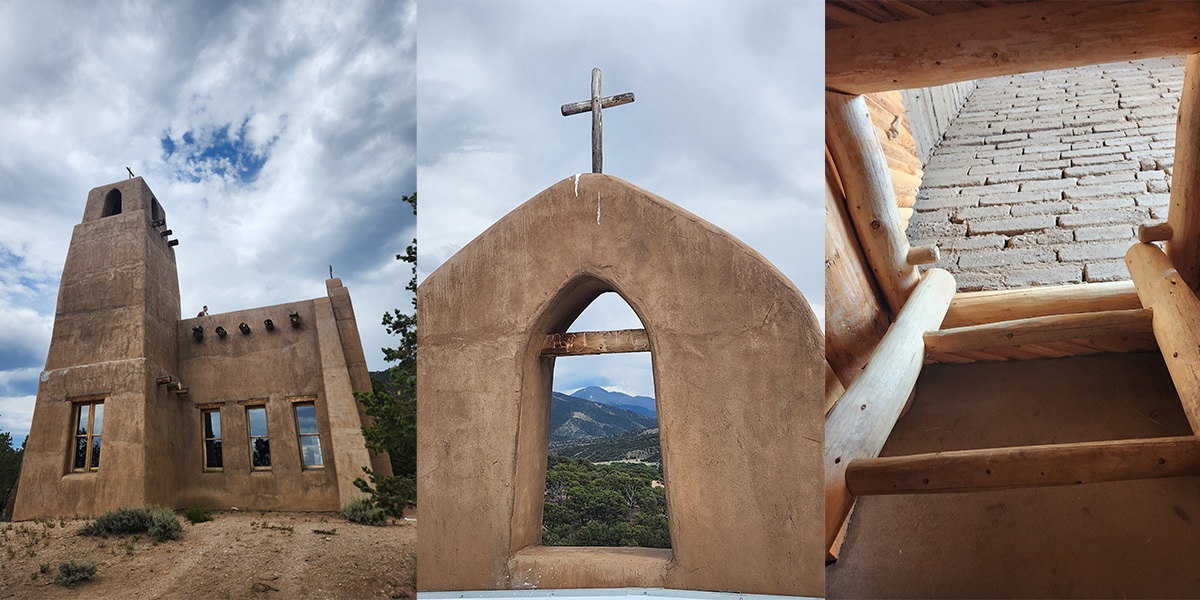
The experience was tremendous. It fostered camaraderie and community amongst the group as we broke bread together, learned about new people, and shared new experiences as a team. Together, we learned that a key to making any camping trip successful is being familiar with the tent you are bringing, and if you are setting it up for the first time, try to do it in the daylight hours. We overcame this obstacle together and left with the valuable lesson that there is nothing worse than setting up a tent for the first time in the dark.
While reflecting on this trip, I have spent time thinking of all the mentors and influential individuals who chose to share their time and talents to help shape me and my journey. Those who guided me range from family members to teachers and coaches to coworkers. I can personally attest that conservation needs to lean into mentorship as it is a powerful tool for passing on knowledge, skills, and experience. As demographics shift in the U.S. it is important that our conservation community engage and provide mentorship to underserved communities so that future generations know the importance of protecting our natural resources now and for future generations to come. Currently Hispanic and Latino children make up 50% of the U.S. population 18 years old and younger and we need to be intentional in how we connect with them.
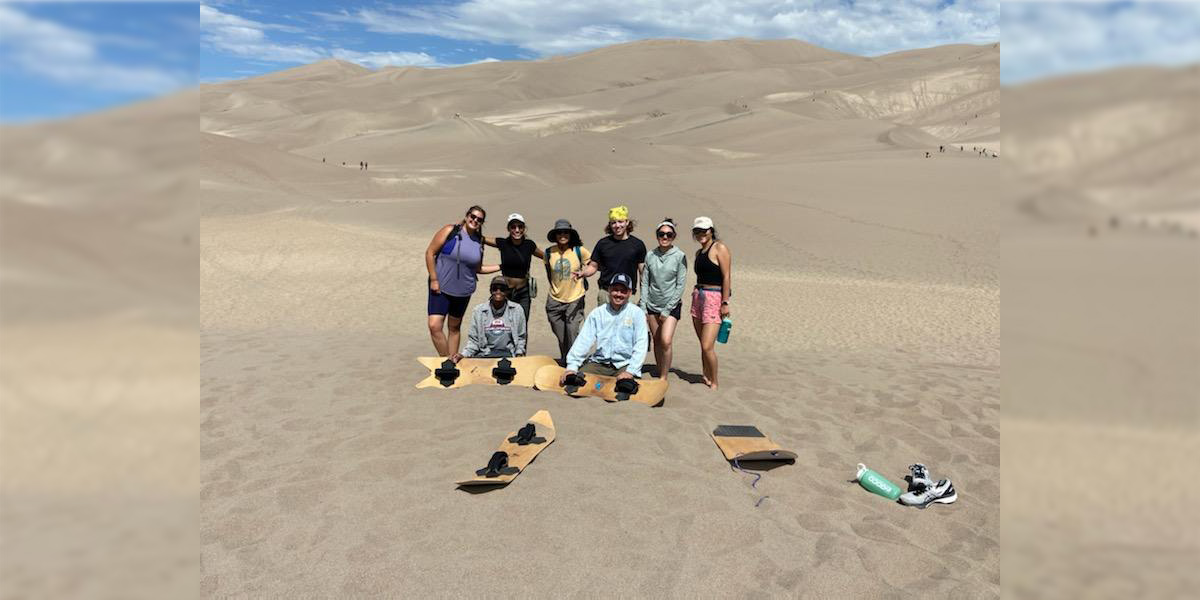
Hunting and angling mentorship is important for introducing new people to the sport and our conservation ethos. It teaches the necessary safety and ethical practices while helping develop a lifelong passion for the outdoors. National R3 programs (Recruitment, Retention, and Reactivation) exist to increase participation in hunting, shooting sports, and fishing and have a strong focus on mentorship. To date, many states and organizations have implemented similar mentoring programs to help grow the hunting community as well.
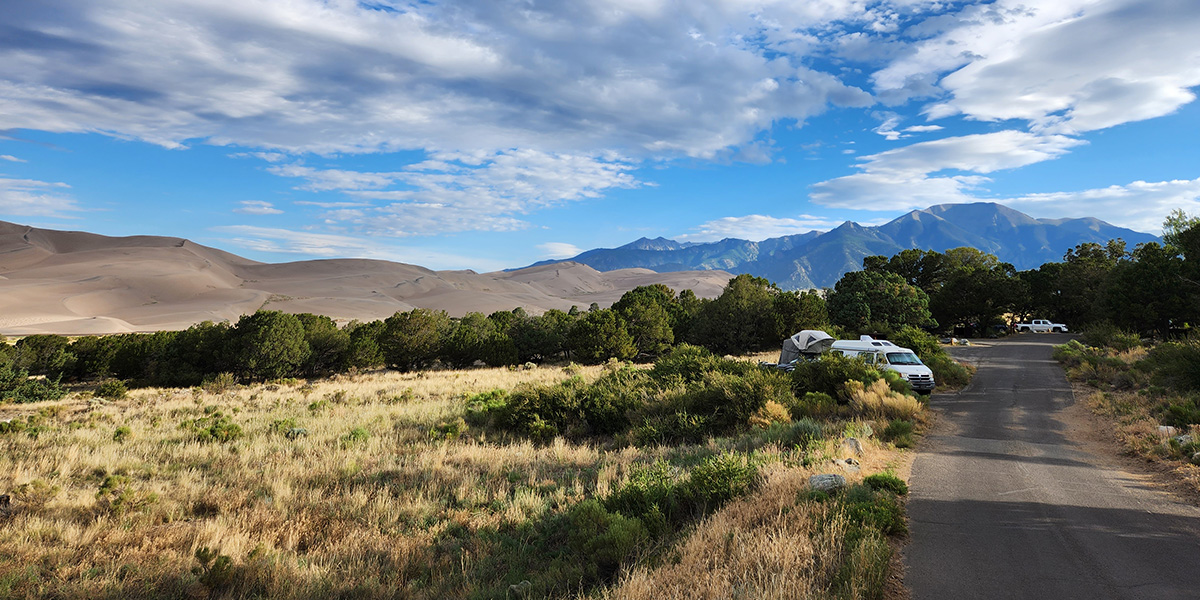
Two additional organizations that have leaned into mentorship are the Minority Outdoor Alliance and Pheasants Forever/Quail Forever. Together, they are engaging new and diverse audiences to build a multicultural upland hunting community. The Learn to Hunt experience is designed to provide opportunities for novice minority hunters to form strong authentic bonds in the field and around the campfire. These events provide knowledge, skills, and an introduction to hunting through education and interaction with instructors in a controlled setting. The desired outcome is that participants gain the confidence and support they need to further pursue their outdoor interests and stay connected well after the event.
As conservationists, let’s keep leaning into the mentorship challenge and extend the olive branch to our kids, friends, neighbors, coworkers, and greater community just as our mentors did for us. I encourage you all to participate in your state wildlife agency’s mentorship programs or take a mentorship pledge like I did this year with Pheasants Forever.
New Report Highlights the Critical Importance of Longleaf Pine Forests
The continued maintenance and restoration of longleaf pine forests will benefit wildlife, habitat, landowners, and local economies.
In a new report, America’s Longleaf Restoration Initiative (ALRI) highlights the critical need to continue maintaining, improving, and restoring longleaf pine forests for the benefit of sporting traditions and recreation, local economies, national defense, rare species, forest resiliency, wildfire risk, clean air and water, carbon sequestration, and climate change mitigation.
When longleaf pine forests are at the healthiest levels, they are among the most diverse forest ecosystems in the world and provide unique wildlife habitat, supporting bobwhite quail, wild turkey, white-tailed deer, and Florida black bear. These forests are one of the best for helping wildlife recover from changes in food, shelter, and movement and they are more resistant to insects, disease, fire, and other risks than other southern pine forests. They play an important role in reducing the effects of climate change on biodiversity and benefit wildlife, habitat, hunters and anglers, landowners, and local economies.
In 2015, U.S. Department of Agriculture Research Forester Christopher Oswalt wrote, “Longleaf pine was once one of the most ecologically important tree species in the southern United States.” Over the last century, longleaf pine forests declined from nearly 90 million to approximately 3 million acres in the mid-1990s.
ALRI was started to turn suitable cropland to longleaf pine forests. In 2008, the ALRI Comprehensive Plan was developed to maintain, improve, and restore these forests. Through the efforts of ALRI and their partners, and with support from the Conservation Reserve Program (CRP), there are currently almost 5 million longleaf pine forest acres in the Southeast.
Introduced in the 1985 Farm Bill, the Conservation Reserve Program incentivizes landowners to put a portion of their acreage into conservation cover, particularly on lands that would be more productive as wildlife habitat than they would be for crops. By assisting farmers and landowners in achieving both farming and conservation goals, the CRP helps protect natural resources by establishing land cover, improving water quality, and increasing wildlife habitat. CRP funds typically reimburse a portion of expenses for approved conservation practices. The Longleaf Pine Establishment program is a great example of a CRP conservation practice and serves as a guide for planting longleaf pine trees and native grasses to support successful prescribed fire management and improve wildlife habitat.
The reported successes of America’s Longleaf 2022 Range-wide Accomplishment Report means positive outcomes for us all. In 2022, ALRI partners established more than 123,000 acres of new longleaf, implemented prescribed fire on more than 1.7 million acres, and protected 38,000 acres of land. Moving forward, ALRI is focused on tackling the highest priorities for the longleaf landscape and working towards increasing longleaf coverage to 8.0 million acres.
By maintaining, managing, restoring, and improving longleaf ranges we can provide wildlife habitat that is critical to our hunting and fishing opportunities. The Theodore Roosevelt Conservation Partnership works to maintain and strengthen the future of hunting and fishing by uniting and amplifying our partners’ voices in conserving and restoring wildlife populations and their habitat as challenges continue to evolve.
To read America’s Longleaf 2022 Range-wide Accomplishment Report, click here.
.
Much-Needed Forest Conservation Program Introduced in the Senate
Lawmakers have introduced a bill to advance private forest conservation that will complement other successful Farm Bill Title II programs.
The Forest Conservation Easement Program (FCEP) Act has been introduced by Senators Kirsten Gillibrand (D-N.Y.) and Roger Wicker (R-Miss.) to advance private lands forest conservation and complement other successful Farm Bill programs. Paired with the House version of the bill, sponsored by Representatives Trent Kelly (R-Miss) and Ann McLane Kuster (D-N.H.), this much needed private-lands conservation option continues to gain steam ahead of the 2023 Farm Bill.
“Hunters and anglers know that forests are essential for wildlife habitat, local economies, and climate resilience,” said Whit Fosburgh, president and CEO of the Theodore Roosevelt Conservation Partnership. “We applaud Senators Gillibrand and Wicker for their leadership on the Forest Conservation Easement Program. It is a much-needed program that will advance forest conservation and complement other successful Farm Bill Title II programs.”
Healthy, working forests are a crucial part of our ecosystems, economy, and sporting traditions. The FCEP Act will complement the existing Agricultural Conservation Easement Program (ACEP) and help ensure that America’s forests remain forests by permanently providing the wildlife habitat, water filtration, carbon sequestration, and forest products they deliver today.
Conservation easements provide a voluntary, incentive-based mechanism for permanently ensuring private land remains undeveloped. The FCEP Act would provide two options to landowners:
- Through Forest Land Easements (FLE), state, local and tribal agencies, and NGOs/land trusts will be able to purchase working forest conservation easements from willing private and tribal landowners, filling a critical void among federal programs.
- Through Forest Reserve Easements (FRE), the Natural Resources Conservation Service (NRCS) will purchase forest conservation easements directly from willing private and tribal landowners and provide financial assistance for the management and restoration of the lands to restore, maintain, and enhance habitat for threatened and endangered and other at-risk species. FRE is the successor to and expansion of the existing Healthy Forests Reserve Program.
The FCEP Act has been championed by The TRCP, The Conservation Fund, Wildlife Mississippi, Land Trust Alliance, National Alliance of Forest Owners, National Wild Turkey Federation, Ducks Unlimited, and more.
“Conservation easements are our most durable tool for voluntary, incentive-based conservation on private land,” said Aaron Field, director of private lands conservation at the TRCP. “The FCEP Act applies that tool to working forests, ensuring that they will continue to be an economic driver while providing habitat, clean water, carbon sequestration, and more.”
TRCP works to maintain and strengthen the future of hunting and fishing by uniting and amplifying our partners’ voices in conserving and restoring wildlife populations and their habitat as challenges continue to evolve.
.
Conservation Fund Helps PA Partnership Protect Chesapeake Watershed
The Northcentral Stream Restoration Partnership’s project work in the Bay’s watershed, supported by the state’s Environmental Stewardship Fund, has improved over 25 miles of streams at 184 sites.
Pennsylvania has approximately 86,000 miles of streams and rivers. Unfortunately, current and past land use practices have negatively impacted this vast resource. Many streams in the Chesapeake Bay watershed are considered impaired by the Pennsylvania Department of Environmental Protection. One of the common impairments in the Bay watershed is excessive nutrient enrichment and sedimentation in agricultural settings, due to human-caused erosion.
In 2007, a partnership among the Pennsylvania Fish and Boat Commission, the Northcentral Pennsylvania Conservancy, the Pennsylvania DEP’s Northcentral Regional Office, and the local County Conservation Districts was formed to tackle stream restoration and watershed stabilization in the Chesapeake Bay watershed. Referred to as the Northcentral Stream Restoration Partnership, the group has worked diligently to address watershed health since its inception. In fact, since the first season of project implementation in 2009, the partnership has improved over 25 miles of streams at 184 sites. From its 2007 formation through 2022, the partnership has utilized $4.3 million in funding to complete these projects. Of this total, a full $3.3 million was provided by Pennsylvania’s Growing Greener Plus Program, which is supported by the commonwealth’s Environmental Stewardship Fund. Like the state’s Keystone Recreation, Park and Conservation Fund, the ESF is a funding source for Community Conservation Partnership Program grants.
Streamside Restoration to Combat Erosion
While some erosion in a stream channel is a natural part of the stream hydrology, excessive erosion can release too much nitrogen and phosphorus-laden sediment into the stream which can cover the stream bottom, destroy aquatic habitats, and reduce the diversity and abundance of aquatic life. This is where the Northcentral Stream Restoration Partnership comes into play.
The partnership strives to restore the watersheds of northcentral Pennsylvania while maintaining a working agricultural landscape. We focus on a collaborative, low-cost approach to stream restoration. This involves working with the local landowners to advance stream corridor restoration projects that will reduce nonpoint source pollution, or excessive nutrient and sediment inputs in agricultural settings. A typical project involves livestock exclusion fencing, creating stable agricultural stream crossings, riparian buffer plantings, and the installation of in-stream habitat improvement devices.
The PFBC Stream Habitat Section works with the partnership to design and construct these in-stream habitat improvement devices, which not only provide fish habitat, but also stabilize eroding stream banks. Common improvement devices include mud sills and log vane deflectors. Mud sills are structures at the water’s edge that form undercut banks and are used on steeper stream banks to remove pressure from the banks, providing a great way to stabilize erosion while also generating an excellent source of overhead cover for fish. By comparison, log vane deflectors are used to divert the flow of water away from the stream bank toward the center of the stream channel, thus reducing stream bank erosion.
The Pennsylvania DEP’s Northcentral Regional Office, Northcentral Pennsylvania Conservancy, and the local county conservation districts administer the implementation funding and design; install livestock exclusion fencing and stable agriculture stream crossings; and plant streamside trees and other native vegetation in a riparian buffer.
Methods Ideal for Streams in Agricultural Settings
Installing habitat improvement devices, exclusion fencing, agricultural stream crossings, and riparian buffers offers an ideal way to achieve a healthy watershed in a working agricultural setting. Livestock exclusion fencing and stable stream crossings are critical to stream bank stabilization and watershed restoration, while the riparian buffer, planted between the exclusion fencing and the stream, serves many benefits. Roots stabilize stream banks, reduce the amount of sediment that enters the water, and absorb nutrients; mature trees and other plants provide shade to keep the water cooler; and the woody debris and leaf litter that falls into streams helps form the base of the food chain and provides habitat for fish and other aquatic organisms, including important insects.
The partnership’s efforts are continuing strong in 2023. A current focus of the partnership is Turtle Creek watershed in Union County. This area is predominately an agricultural landscape, and the creek is currently impaired due to excessive siltation. The project started with one landowner contacting the Union County Conservation District to request help with bank erosion occurring in his pasture. Once the project had been completed and the results were clearly visible, the initial project prompted other farmers and neighbors to request assistance on their properties.
This partnership has now restored more than four miles of Turtle Creek to date, with more projects planned for this year and beyond. Additionally, results from scientific surveys provide evidence that the creek is on its way to generating a healthier watershed.
Partnership Necessary for Success
The Northcentral Stream Restoration Partnership’s motto is “Everyone does a little, so no one has to do it all.” Partnerships are effective in part because efforts are spread among all members, and this is just one of many partnerships that the PFBC’s Stream Habitat Section participates in.
For more information on habitat improvement in Pennsylvania, visit the PFBC habitat improvement page.
Tyler Neimond is chief of the Division of Habitat Management for the Pennsylvania Fish & Boat Commission. He enjoys hunting, fishing, and exploring the natural resources of the commonwealth. Click here to learn more about ways the commission is working to improve fish habitat, coordinate dam removals, and provide technical assistance on the design of riparian buffers.
Support Pennsylvania’s state conservation funding programs by letting lawmakers know they matter to you.
Photo credits: Noah Davis
HOW YOU CAN HELP
CHEERS TO CONSERVATION
Theodore Roosevelt’s experiences hunting and fishing certainly fueled his passion for conservation, but it seems that a passion for coffee may have powered his mornings. In fact, Roosevelt’s son once said that his father’s coffee cup was “more in the nature of a bathtub.” TRCP has partnered with Afuera Coffee Co. to bring together his two loves: a strong morning brew and a dedication to conservation. With your purchase, you’ll not only enjoy waking up to the rich aroma of this bolder roast—you’ll be supporting the important work of preserving hunting and fishing opportunities for all.
Learn More
You have Successfully Subscribed!


